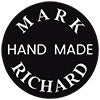-
Professional 57" British 8-Ball Break Cue | Zebra Wood & Canadian Ash | Power Break Specialist #T2EPB01
Regular price £129.99 GBPRegular priceUnit price per -
Midnight Racer Design 57" British Break Cue – 3/4 Jointed Ash & Exotic Wood Splice #T2EPB03
Regular price £129.99 GBPRegular priceUnit price per -

Professional Ocean-Inspired English Pool Break Cue – 57" 3/4 Jointed Ash & Exotic Wood #T2EPB02
Regular price From £99.99 GBPRegular priceUnit price per
FAQs
Why choose a 3/4 jointed break cue over a centre-jointed one?
A 3/4 jointed break cue offers superior shaft consistency and a more stable feel during high-impact shots. Because the joint is placed closer to the butt, the upper shaft remains intact—this allows for:
- More efficient power transfer on the break
- Reduced vibration and cue flex
- A feel closer to a one-piece cue
This makes them ideal for players who want performance without compromising on portability.
Is a 3/4 break cue suitable for both pool and snooker?
Generally, break cues are more common in pool than snooker, especially for English 8-ball or American 9-ball, where a powerful break is critical. However, some snooker players may use a break cue for the opening shot in competitive formats.
If you play both games, a 3/4 jointed break cue with a medium-to-large tip size (10–11mm) and a stiffer shaft can serve well across both disciplines.
What tip size is best for a 3/4 break cue?
Break cues typically come with harder and larger tips, designed to transfer more energy to the cue ball:
- For English pool, a 9.5–10mm tip is common
- For American pool, tip sizes of 12–13mm are standard
These tips are usually made from phenolic or extra-hard leather to withstand repeated impact.
Are there risks of damaging a 3/4 cue when using it as a break cue?
As long as the cue is designed as a dedicated break cue and built from strong materials (like maple or composite woods), it will be reinforced to handle break shots. Look for features like:
- Hardwood butt sections
- Heavy cue weight (19oz+)
- Sturdy joint construction (brass or steel)
Avoid using a regular playing cue to break, especially if it's a more delicate or expensive snooker cue—the joint and tip aren’t built for repeated impact.



